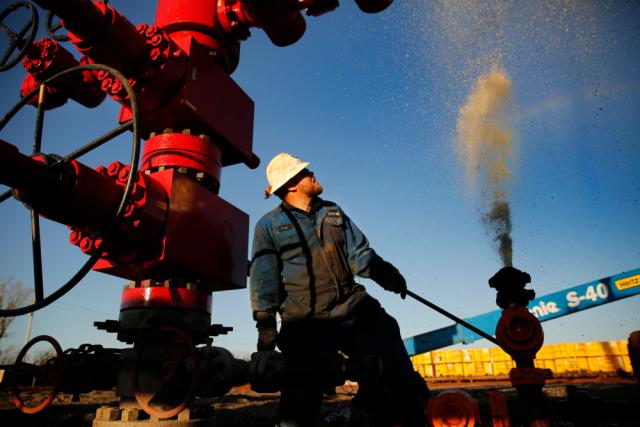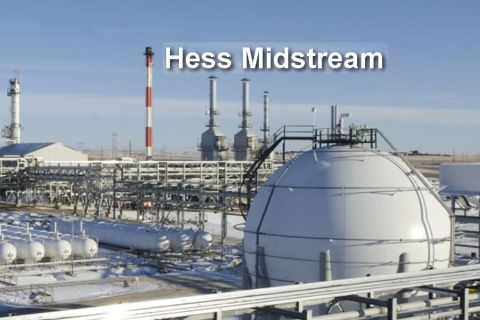
Rystad Researcher Artem Abramov called current prices for frack sand “unheard of in the industry's modern history.” (Source: Hart Energy)
With crude prices at their highest levels in years, U.S. oil drillers are trying to boost output fast, but their efforts have been hit by a shortage of sand to use for fracking operations.
Crude output is expected to hit records in parts of Texas and New Mexico, the heart of U.S. shale activity. Sand supplies are so tight that it is slowing the pace of work for some oil drillers, and higher costs for sand are eating into the bottom line for others.
But demand is still heavy as drillers look to cash in on crude prices that this week touched $95/bbl, the highest in roughly seven years. Crude slid about 4% from those peaks on Feb. 15 but remained well above $90/bbl.
“We can’t get enough sand. We’re running less than the number of [fracking] stages we could pump in a day because we’ve run out of sand every day,” said Michael Oestmann, CEO of private equity-backed Tall City Exploration, which operates in the Permian Basin of West Texas, the largest U.S. shale region.
“Ultimately it will slow everyone down if it doesn’t resolve itself.”
Once overbuilt and oversupplied, the sand markets have been turned upside down. Consultancy Rystad estimates that spot prices are between $50 and $70 a ton—a giant leap from prices in early teens at the start of the pandemic and sharply above last year’s levels of $20 to $25 per ton.
Rystad Researcher Artem Abramov called current prices for frack sand “unheard of in the industry's modern history.” Tight supplies will probably push sand prices even higher, Abramov said. He estimates that one to two in-basin sand mines have been idled at any given time since December.
U.S. shale production is expected to rise by 109,000 bbl/d in March, to 8.7 million bbl/d, according to the U.S. Energy Information Administration. The Permian Basin is expected to see output rise to 5.2 million bbl/d in March, which would be a record, and there are now 301 oil rigs operating in that basin, the most since April 2020.
U.S. frackers added three crews in the first week of February, boosting the total to 264 from roughly 167 this time last year, according to consultancy Primary Vision.
The sand market is so tight Oestmann said, because fewer people have been working in the mines and there has been a shortage of truck drivers. He said his company is looking to bring sand in by rail, a sourcing method that fell out of fashion following the advent of local mines a few years ago.
“The railed sand depots were busy,” said Richard Spears, vice president of oilfield consultancy Spears & Associates, of a recent trip to West Texas. “When that source is kicking in at high volume, and the local mine is full out, you know you’ve got a challenge.”
Much of the sand being railed in is coming from Wisconsin, according to Rystad.
U.S. independent fracking firm Liberty Oilfield Services, which recently acquired a last-mile sand delivery firm PropX, last week said it had seen bottleneck challenges around sand in the Permian Basin, both in regards to availability and transportation.
Recommended Reading
Hess Midstream Announces 10 Million Share Secondary Offering
2024-02-07 - Global Infrastructure Partners, a Hess Midstream affiliate, will act as the selling shareholder and Hess Midstream will not receive proceeds from the public offering of shares.
EQT CEO: Biden's LNG Pause Mirrors Midstream ‘Playbook’ of Delay, Doubt
2024-02-06 - At a Congressional hearing, EQT CEO Toby Rice blasted the Biden administration and said the same tactics used to stifle pipeline construction—by introducing delays and uncertainty—appear to be behind President Joe Biden’s pause on LNG terminal permitting.
Venture Global Acquires Nine LNG-powered Vessels
2024-03-18 - Venture Global plans to deliver the vessels, which are currently under construction in South Korea, starting later this year.
Imperial Oil Shuts Down Fuel Pipeline in Central Canada
2024-03-18 - Supplies on the Winnipeg regional line will be rerouted for three months.
Hess Midstream Subsidiary to Buy Back $100MM of Class B Units
2024-03-13 - Hess Midstream subsidiary Hess Midstream Operations will repurchase approximately 2 million Class B units equal to 1.2% of the company.





